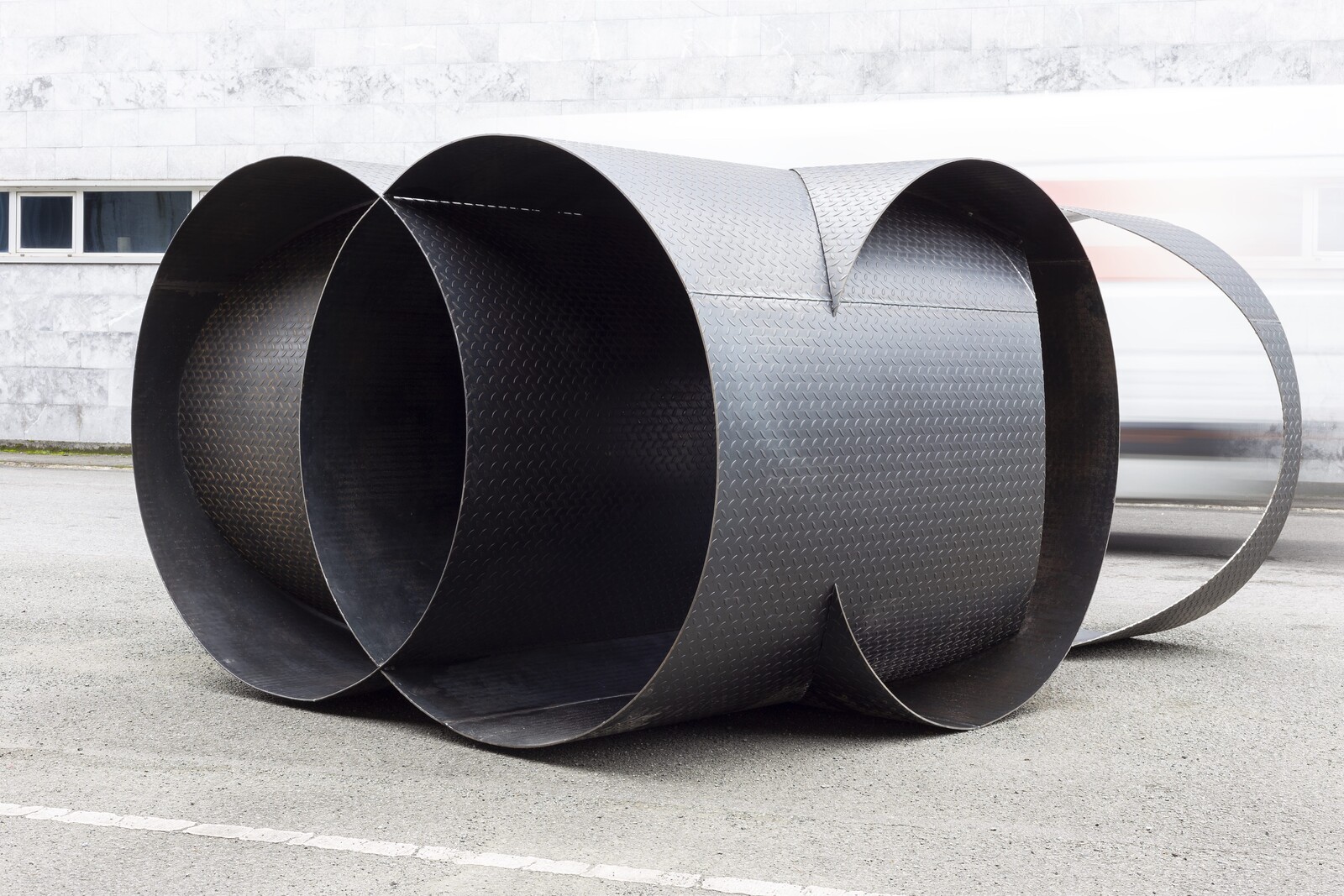Vascular
March 1–June 9, 2024
Abandoibarra et.2
48001 Bilbao
Spain
Curated by Manuel Cirauqui.
The sculptural practice of June Crespo (b. Pamplona, 1982) is purposefully situated at the intersection of multiple pathways and contemporary lines of research. It engages in a transformative dialogue with the concepts that have shaped Basque art in recent decades—namely, “moving pairs” such as abstraction and gesture, the tragic and the opaque, lightness and strangeness. It also takes on certain pressing issues that have only recently been included within the broader debates, in particular with respect to feminist sensibilities and our growing awareness of the devastation caused by modern lifestyles on natural ecosystems, now entirely subjected to the cycles of post-industrial, Anthropocenic production and reproduction.
The active materiality of Crespo’s practice is at the very basis of Vascular, an ambitious installation now on view at the Guggenheim Museum Bilbao. The show offers a new perspective on Crespo’s work while inviting her, at the same time, to explore an unprecedented scale. Crespo’s sculptures bring together and combine a wide range of diverse parts—molds of plants, clothes or found textiles, construction elements, concrete casts, magazines. By radically assembling them or changing their proportions, they emphasize the stark contrast between the lived material and the structural elements that confine and channel our existence, be they ducts, metal sheets, molds, or formwork. Stems are then connected to them, or bits of textile or paper get trapped in their joints, while traces of technical operations, erosions, and accidents can be read in them as well. Bound by lashing straps, or simply resting upon each other, these elements appear to ceaselessly interrogate one another.
Alongside a selection of pieces from the last seven years, Vascular features new sculptural ensembles where recurring forms, gestures, and visions are reminiscent of Crespo’s previous bodies of work. Examples of her insistence include the sculptural or even architectural use of photographs, which become large-scale floor prints; or the presentation of structures used in industrial production or in building, such as work tables or raising platforms that serve to hold up the proliferation of vegetal forms, tubes, and cylinders in the gallery. Vascular seeks to point out the internal communication at the core of Crespo’s individual sculptures, while also suggest transmissions between all the works included in the exhibition. These act as communicating vessels and capillary networks, expanding their material relations as well as the scarifications and marks that the artist provokes on their irregular, somehow reversed surfaces.



